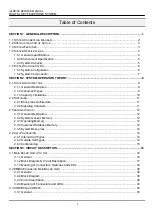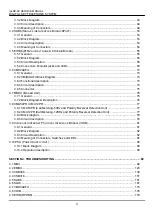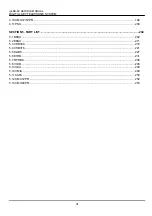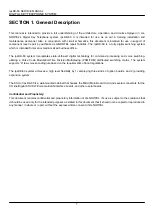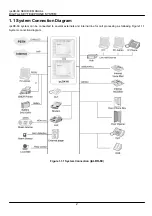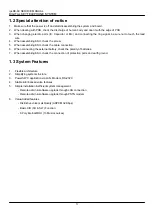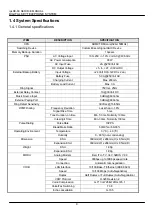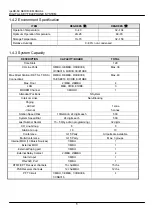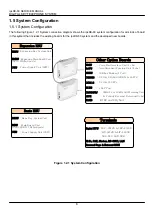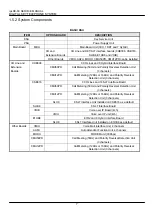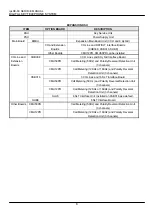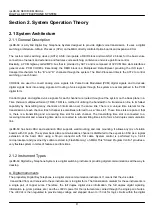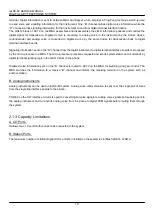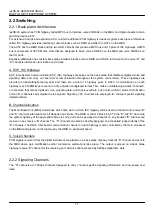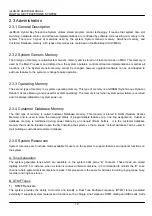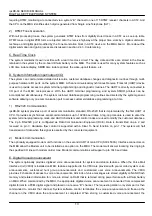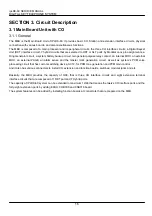
ipLDK-60 SERVICE MANUAL
DIGITAL KEY TELEPHONE SYSTEM
9
Section 2. System Operation Theory
2.1 System Architecture
2.1.1 General Description
ipLDK-60 is a Hybrid Digital Key Telephone System designed to provide digital voice transmission. It uses a digital
switching architecture. A Main Processor (CPU) on the MBU directly controls Option boards and expansion KSU.
The custom main switching device (ACT2) ASIC incorporate a DBID block and two GSL12 blocks for the basic voice
connection of network and extension and features voice switching, conference and voice gain/tone control.
Basically, a PCM highway called MPX bus that is provided by ACT2 and is composed of 32 PCM time slots interfaces
general voice PCM CODECs. Essentially, the DBID
block
is a Multiplexer/ Demultiplexer providing the ISO layer 1
transport mechanism for the “B” and “D” channels through the system. The Main Processor directs the ACT2 to control
switching on each board.
CODECs are used to convert analog voice signals into Pulse Code Modulated (PCM) digital signals and to decode
digital signals back into analog signals. All routing of voice signals through the system are accomplished in the PCM
digital form.
Control Signals and digitized voice signals for each channel are routed throughout the system on the back plane in a
Time Division multiplexed format (TDM). TDM is a method of utilizing the bandwidth of a transmission line to its fullest
capability by transmitting many channels of information over the same link. There is a unique time interval for the
transmission of each channel. Each channel is sometimes referred to as a “time slot”. These time slots are paired, that
is, there is a transmitting and a receiving time slot for each channel. The transmitting time slot is connected to a
receiving time slot and a receiving time slot is connected to a transmitting time slot to form a full duplex communication
link.
ipLDK-60 has basic KSU and expansion KSU supports wall mounting and rack mounting. It allows any mix of station
boards with CO ports. The system back plane communications channel is distributed to the expansion KSU as a logical
extension of the basic KSU using a 50-pin connector with flat cable. System control is performed by a 32-bit
microprocessor and governed by software stored in (Flash Memory) on MBU. This “Stored Program Control” provides a
very flexible system in terms of features and functions.
2.1.2 Instrument Types
ipLDK-60 Digital Key Telephone System is a digital switching instrument providing digital communications all the way to
desktop.
A. Digital Instruments
The proprietary Digital Key Telephone is a digital voice communication instrument. It means that the voice data
transmitted from and received to these instruments is in digital form. The transmission medium for these instruments is
a single pair of copper wires. Therefore, the full duplex digital voice information, the full duplex digital signaling
information (e.g. lamp status, etc.) and the +30Vdc power for the instrument are carried through the single pair of wires.
The +30Vdc is then regulated to provide lamp voltage and stepped down to
±
5Vdc for logic circuits within the digital


